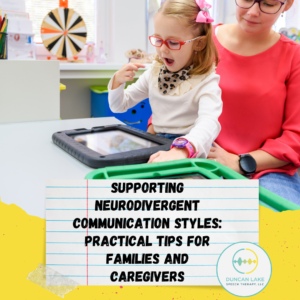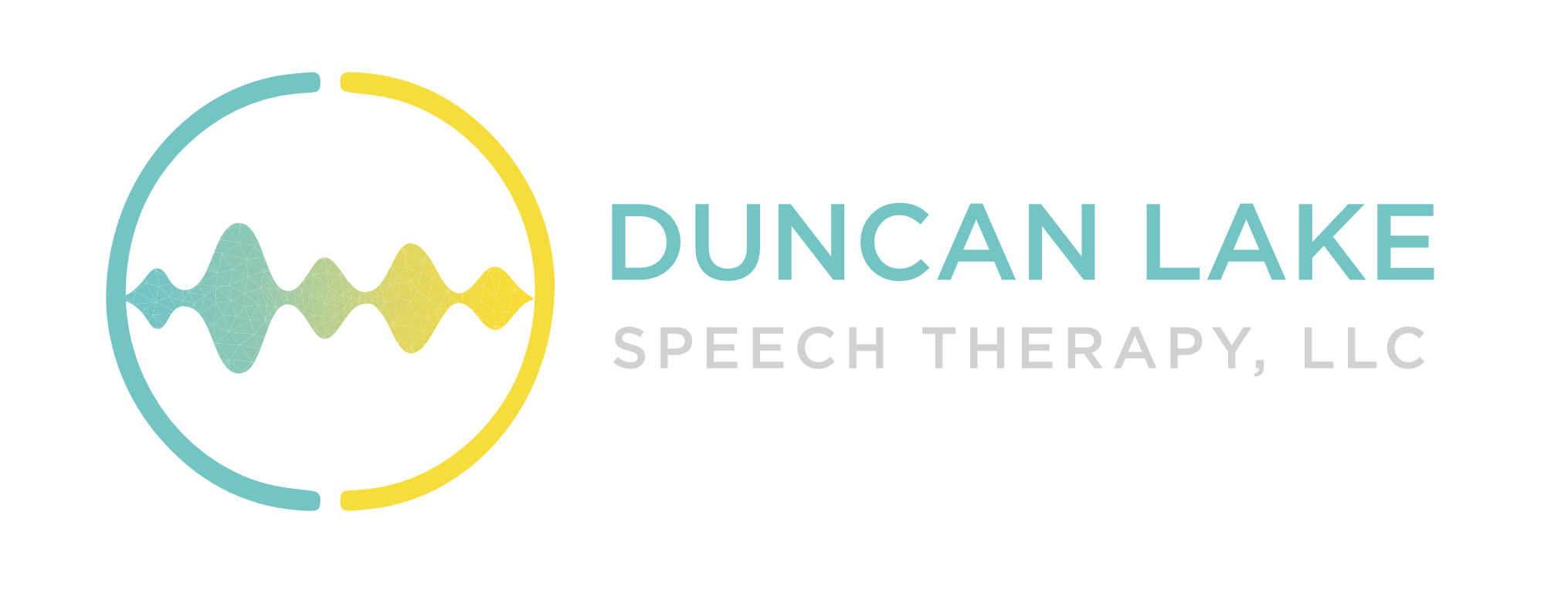by Tamiko Teshima, M.A, CCC-SLP
Practice Owner & Speech-Language Pathologist
Duncan Lake Speech Therapy, LLC
At Duncan Lake Speech Therapy, we believe that all communication is valid.
In honor of Autism Acceptance Month, we’re taking a deeper look at what it means to support and affirm neurodivergent communication styles. Whether a child uses spoken words, gestures, AAC, echolalia, or other forms of expression, the goal isn’t to “fix” the way they communicate. It’s to understand, support, and celebrate it.
Here are a few ways caregivers can help foster connection and confidence in neurodivergent communicators:
Honor All Forms of Communication
Communication isn’t just speech. Many neurodivergent people use alternative forms like AAC (augmentative and alternative communication), scripting, or body language. These are not “lesser” forms—they are valid, meaningful, and worth responding to.
Instead of pushing for speech only, try to observe and respond to your child’s communication in whatever form it takes. A look, a sound, a gesture—all of it counts.

Understand Scripting and Echolalia
Many Autistic children use echolalia or scripting to process language, regulate emotions, or express themselves. These repeated phrases often hold meaning, even if it’s not immediately clear. Rather than discouraging these patterns, try to engage with them. Ask yourself: What might my child be trying to tell me? What does this phrase mean to them in this moment? Also, please check out Gestalt Language Processing!
Follow Their Lead
Neurodivergent kids often communicate best when they’re in control of the interaction. That might mean joining them in their play, repeating their scripts, or giving them space when they need it. You don’t have to direct every moment. Sometimes the most meaningful interactions come when we slow down and let them lead.
Model and Expand Without Pressure
Modeling is powerful. We know that already! Instead of demanding your child say a specific word or phrase, try using natural modeling. For example, if your child says “car,” you might say, “Yes! A big blue car!” This expands their language without turning it into a test. And remember—language grows best in low-pressure, joyful environments.
Create Safe Communication Spaces
Kids thrive when they feel accepted. That means making room for stimming, honoring sensory needs, and building environments where communication doesn’t always have to look a certain way. When a child feels safe, they’re more likely to take risks, try new things, and show us the many beautiful ways they communicate.
At DLST, we’re proud to support neurodivergent kids and families in affirming, inclusive ways. If you have questions or want support in understanding your child’s communication style, we’re here to help.



Recent Comments